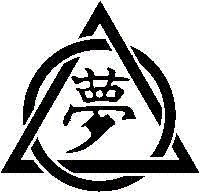

A BRIEF HISTORY OF SHITO RYU
The style of Karate known as Shito Ryu had its origins on the island of Okinawa. In ancient times, the art of Karate was not practiced openly. Those who chose to practice the art did so secretly, hidden from public view. In those early days Karate was known as ‘Te’, which means hand. Karate was often given the name of the person who was teaching, or the province where that style was taught. The three most well known areas associated with Karate in Okinawa were Naha, Shuri and Tamari. In the late 19th century the most famous grand master in Shuri was Itosu; and in Naha the grandmaster was Higashionna. Itosu was known for speed, and Higashionna was known for strength.
Mabuni Kenwa was a student of both grandmasters, and out of respect for his teachers named his style of Karate ‘Shito Ryu’. Soke (originator) Mabuni had combined the karate of both his teachers, and so combined their names to make Shito Ryu. In the name Itosu, the first character is pronounced ‘she’; and the first character in the name Higashionna is pronounced ‘to’, thus the name ‘Shito’. Ryu means style. Soke Mabuni was also very skilled in weapons such as bo, sai and nunchuku to name a few. These are the reasons why our style of Karate, Shito Ryu, has the elements of speed, strength and skill in weapons.
The popular art we call Karate did not become widespread until the 1950’s. Prior to this time it was believed that Karate and Karate tournaments weren’t possible for the general public as the techniques were too damaging. There were none of the belts and ranking systems we associate with Karate today. By limiting the techniques and by introducing a scoring system tournaments became a possibility. Using the same techniques used in teaching school kids, Karate was introduced to the general public and began to spread throughout Japan, and the world.
Although Karate has its roots in Okinawa, its origins are Japanese. At one time the word ‘karate’ meant Chinese hand. The Japanese evolved Karate and the name changed to ‘empty hand’, and continues to evolve today. The ancient Okinawan masters would probably find little to recognize in our Karate today, except strong spirit and the drive to improve.
Mabuni Kenwa
Mabuni began his karate training at an early age. Mabuni was in poor health as a child, and his parents thought karate would help him. Mabuni thrived in karate, becoming a strong and talented student known for his ability as well as his hunger for greater knowledge. This was a golden time for karate. There was a sharing of knowledge between young students and masters that helped karate become what it is today. Mabuni studied with intensity from two main instructors: Itosu and Higashionna. These two instructors fostered the styles of Shotokan through Funakoshi, and Goju Ryu through Miyagi. Funakoshi and Miyagi studied with Mabuni, and maintained a close relationship through the years, all helping promote and improve the art they loved.
in 1929 Mabuni formally opened a dojo in Osaka, Japan, and named his style Shito Ryu, out of respect for his two main instructors, Itosu and Higashionna. Mabuni’s son Kenzo inherited his fathers title of soke (originator) in 1952, and carries on his father’s karate in its true, unaltered state, known as Seito (orthodox) Shito Ryu. Mabuni Kenzo has dedicated his life to preserving his father’s art. Many different styles of Shito Ryu are practiced today, but only Seito Shito Ryu is taught as Mabuni Kenwa developed it. Mabuni Kenzo brought Seito Shito Ryu to America in 1993 and through seminars has been exposing karate practitioners to this true form of Shito Ryu, resulting in the formation of the Shito Ryu Karate Do Kai of America. This western organization is comprised of dojos that have requested of him to be his direct students, and have received formal acceptance by his senior instructors, the Nippon Karate Do Kai Shihan Kai of Japan.



